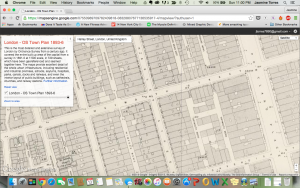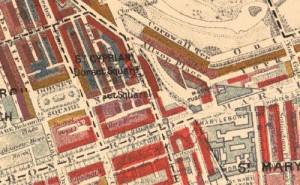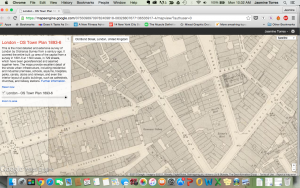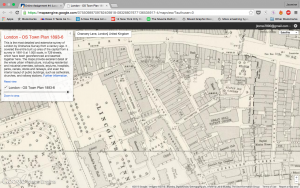In Romance of A Shop, Harley Street is only mentioned once, in passing. “‘There is a light in Frank Jermyn’s window- the top one,’ she cried; “I suppose he is dressing. He told me he had an early dance in Harley Street. I wish I were going to a dance.” Phyllis observes this as she is looking out the window. Before I go into the details of Harley Street, I’ll examine the quotation, by giving the context that it was mentioned it. In the beginning of the chapter, Frank Jermyn had stopped by, and left abruptly after Lucy asked if she could invite Fred Devonshire, who later proposes to her. At this stage of the book Frank could have seen Fred as a romantic opponent, as he leaves somewhat upset after hearing that Lucy wants Fred to accompany them. The other Lorimer sisters probably have some suspicion of Frank’s feelings for Lucy, and so when Phyllis mentions that Frank is going to a dance, I think it was her way of trying to see if Lucy had feelings for Frank in return. After she says the above quotation, she is described as giving Lucy a mischievous look. That mischievous look made me wonder if Frank is actually going to a dance there, and if Phyllis is instead trying to provoke Lucy. Nonetheless, Frank could actually be going to a dance on Harley Street, as it was a very wealthy area.

The sisters also briefly discuss how he will get to Harley Street. It seems as if it’s a very long walk, and they mention that he loves to take the omnibus. This brings up one of the themes of the Victorian era, transportation. Here, Frank Jermyn is also embodying this theme for the Lorimer sisters. Transportation serves the purpose of moving a person from an origin point to a destination. Frank takes the sisters from the point of being unknown, to being very successful. Another theme that comes up with Harley street is the theme of social classes. Although Frank Jermyn and the Lorimers are not very wealthy, they are not poor. Being part of the working class, each one has also given up their true dreams to do what will aid them in their survival. Harley Street, as previously mentioned, was a very wealthy area. Frank is not just going to Harley Street, but he is also moving from their mixed and middle class area to a much wealthier area. This may represent the ambitions of Londoners of the time, to work themselves out of their homes and into wealthier areas. Harley Street, besides being a wealthy area, was also the home to Queen’s College School. Founded by Frederik Denison Maurice and his colleagues in 1848, it was an all girls school. Presently and historically, Harley Street is the location of many medical offices, making it a professional area.
“Booth Poverty Map & Modern Map (Charles Booth Online Archive).” Booth Poverty Map & Modern Map (Charles Booth Online Archive). N.p., n.d. Web.
Levy, Amy. The Romance of a Shop. Peterborough, Ont.: Broadview, 2006. Print.
“Queen’s College and the “Ladies’ College”” Victorian Web. Ed. Jacqueline Banerjee. N.p., 14 June 2007. Web.





